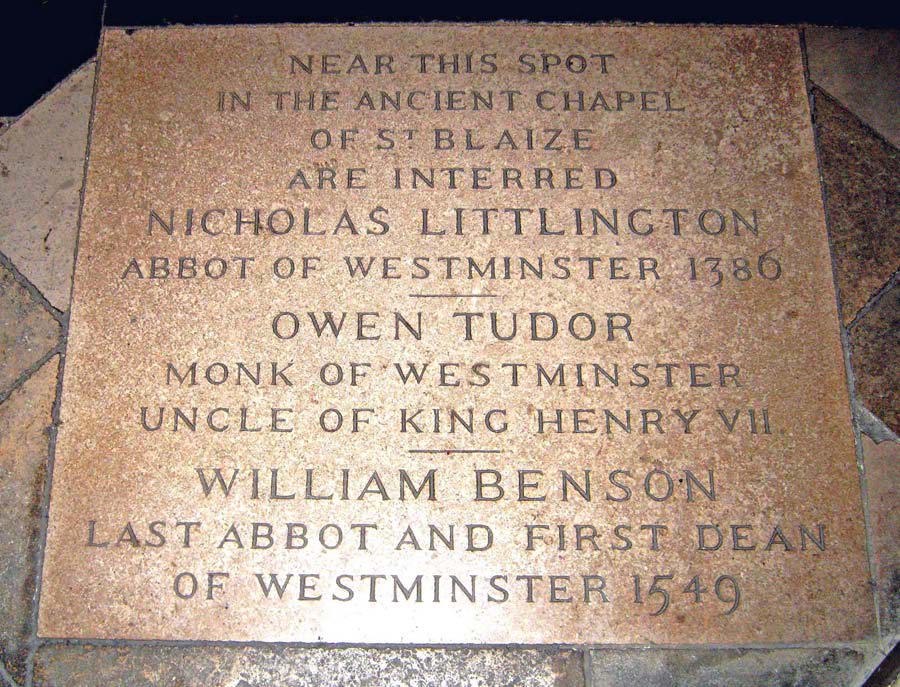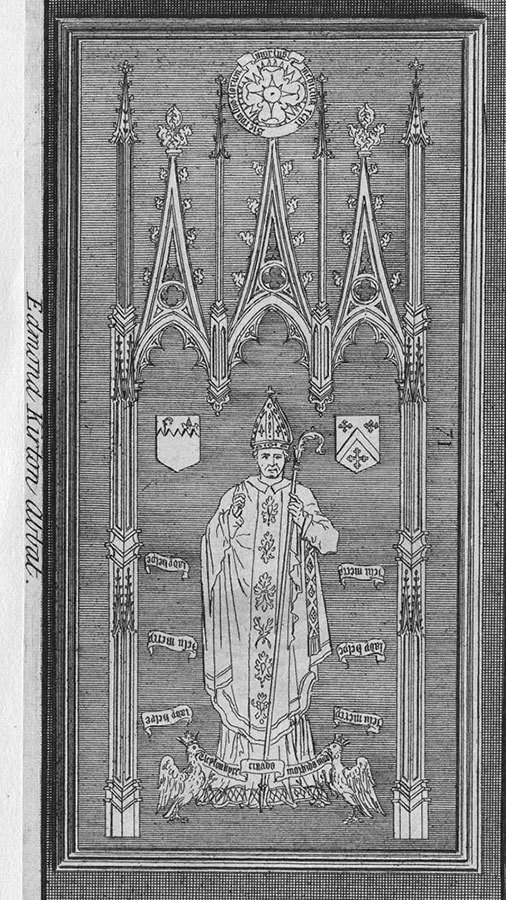Richard de Ware
Richard de Ware was Abbot of Westminster from 1258-1283 and is buried beneath the Cosmati pavement, in front of the High Altar of Westminster Abbey. Monks most often took their surname from the place of their birth or the town they came from but we know nothing of his origin. Richard was proctor to Abbot Crokesley in 1257 and was appointed Abbot in December 1258.
He travelled to Italy to be confirmed as Abbot, probably at Anagni cathedral near Rome, which houses the finest collection of cosmati work in Italy. He compiled the Abbey Customary (rules and regulations for the monastery) and was Treasurer of England, undertaking diplomatic missions abroad for the king. He is best known for bringing workmen and precious marbles from Rome to make up the magnificent pavement in Henry III's new Gothic church.
He died on 8th December 1283 and is buried on the north side of the pavement. The inscription has now disappeared from his grave but was recorded by the Abbey historian John Flete and can be translated:
Abbot Richard de Ware, who rests here, now bears those stones which he himself bore hither from the City
The City, in this case, was Rome.
Further reading
Oxford Dictionary of National Biography
"Patterns of thought: the hidden meaning of the Great Pavement of Westminster Abbey" by Richard Foster, 1991
"Westminster Abbey and the Plantagenets" by Paul Binski, 1995
"Customary of the Benedictine monasteries of St Augustine Canterbury and St Peter Westminster" edited by Sir Edward Maunde Thompson, vol. II, 1904 (text in Latin)

This image can be purchased from Westminster Abbey Library
Image © 2025 Dean and Chapter of Westminster










